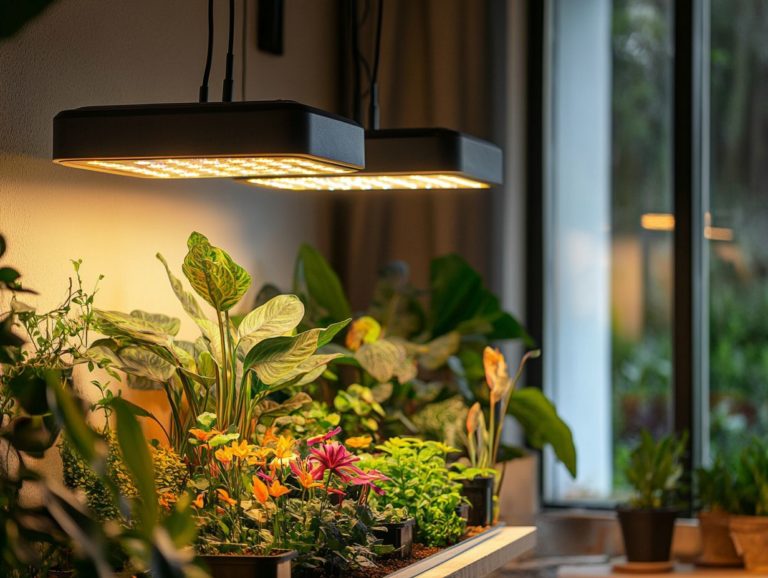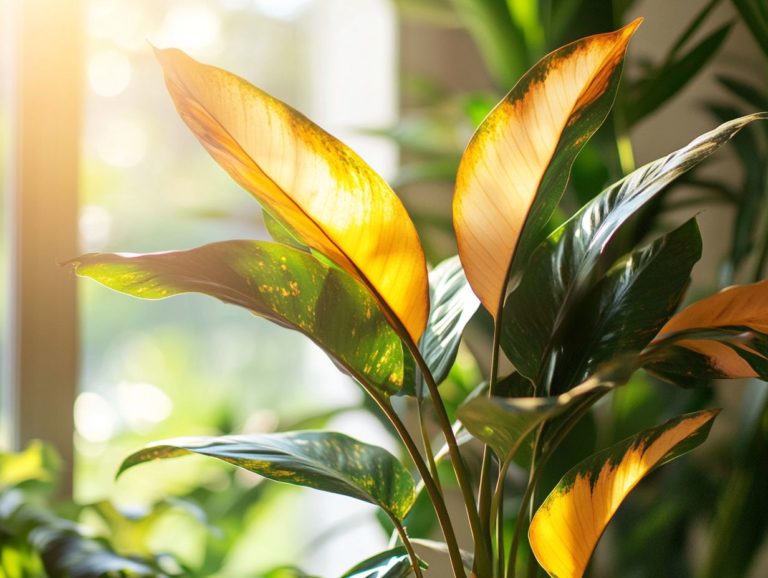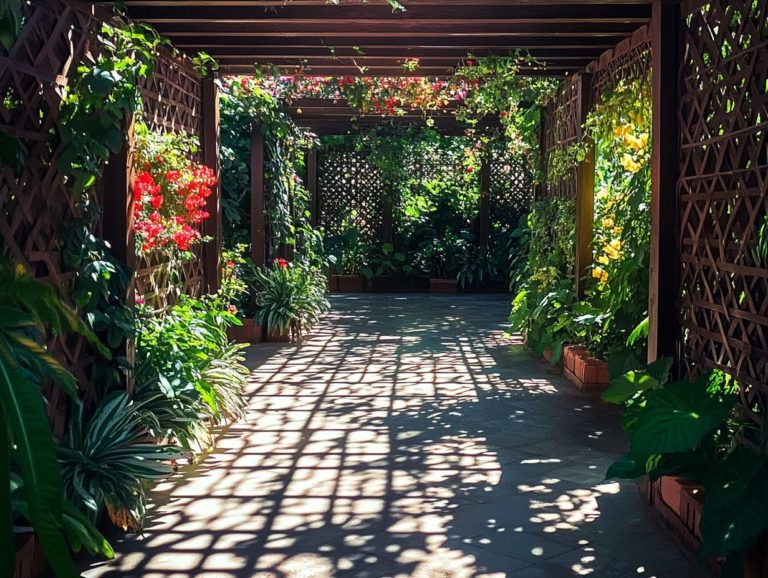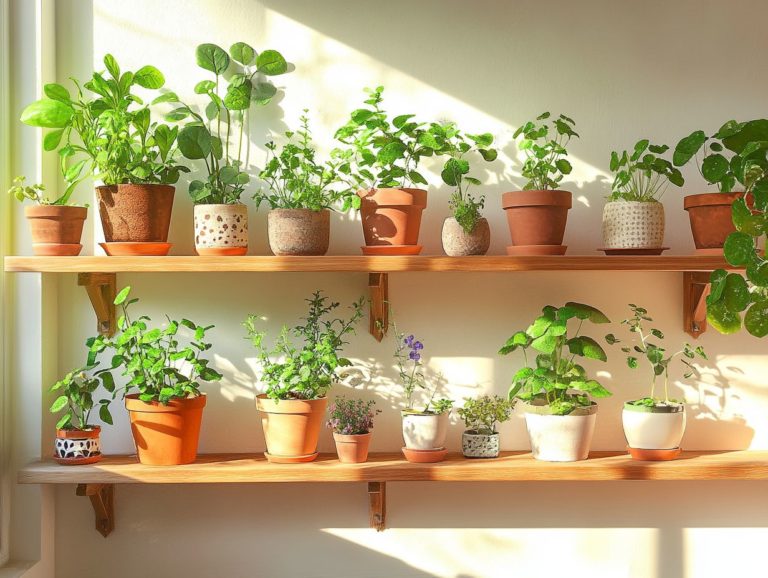The Science of Light and Plant Care
Light serves as the cornerstone of plant life, acting as the vital force behind photosynthesis and shaping growth in various dimensions!
Understanding the impact of different types of light whether natural or artificial is essential for you as a gardener or plant enthusiast!
This guide explores everything you need to know about providing the ideal lighting conditions for your plants. From identifying signs of light deficiency to mastering optimal lighting techniques, let s get started!
Elevate your plant care and nurture flourishing greenery!
Contents
- Discover Key Takeaways for Plant Lighting Success!
- The Importance of Light for Plants
- Types of Light for Plant Growth
- Understanding Light Spectrum
- Factors Affecting Light Absorption by Plants
- Distance, Intensity, and Duration
- Signs of Insufficient Light for Plants
- Identifying and Addressing Light Deficiency
- Best Practices for Providing Adequate Light
- Frequently Asked Questions
Discover Key Takeaways for Plant Lighting Success!
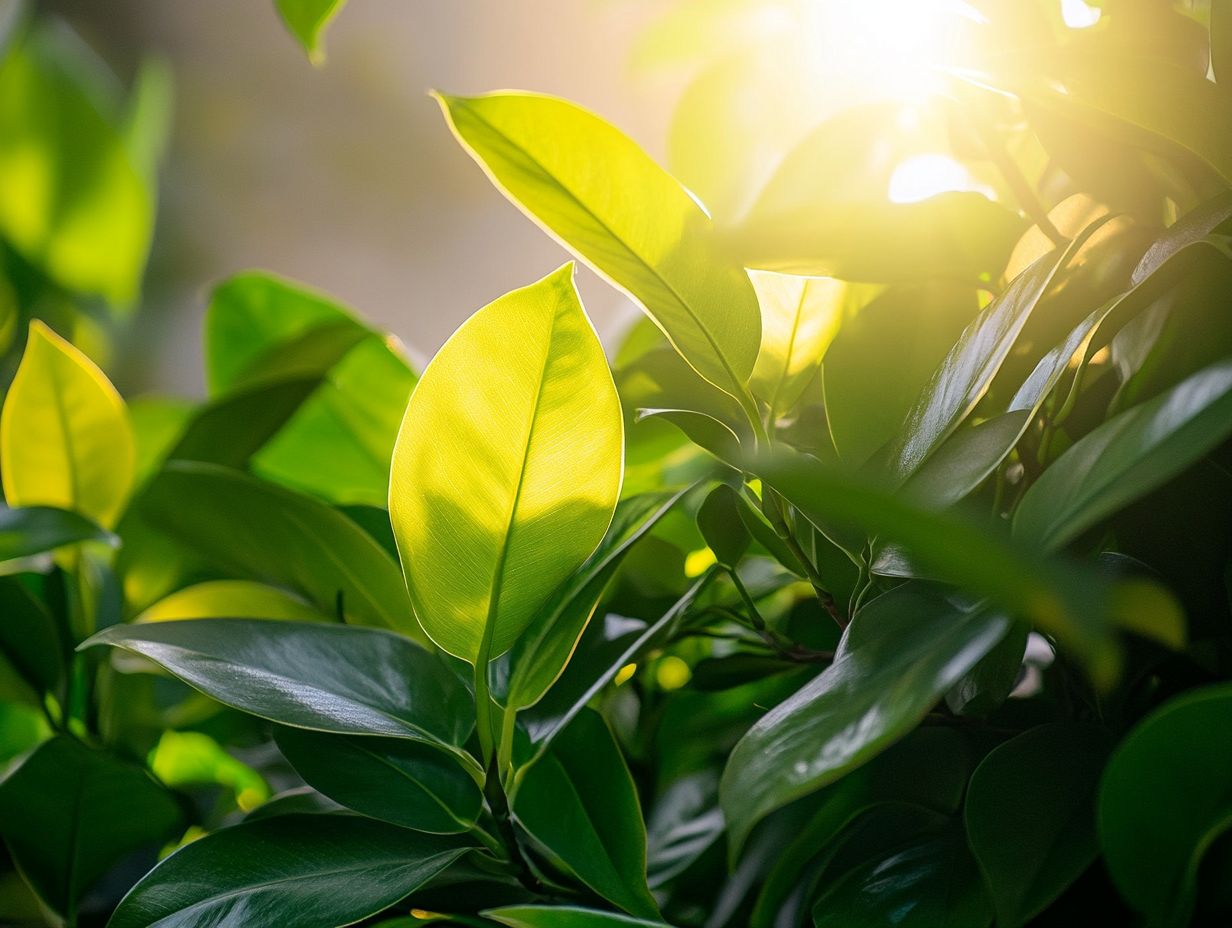
- Light is essential for plant growth, playing a crucial role in photosynthesis, the process by which plants convert light into energy.
- Understanding the difference between natural and artificial light, as well as the light spectrum, helps determine the best type of light for your plants.
- Distance, intensity, and duration of light exposure are significant factors affecting how well plants absorb light and their overall health and growth.
The Importance of Light for Plants
Light is vital for plants, acting as a cornerstone in the photosynthesis process. This remarkable ability enables them to transform light energy into the chemical energy necessary for their growth and development!
Different plant species, such as tropical plants, cacti, and succulents, have distinct light requirements that must be carefully met for optimal health. Understanding the critical relationship between light intensity and environmental conditions is essential for indoor gardening!
In indoor gardening, artificial lighting may supplement or even replace natural sunlight, ensuring that your plants flourish in their unique ecosystems!
Role of Light in Photosynthesis
The role of light in photosynthesis is essential, as it allows plants to harness chlorophyll to transform carbon dioxide and water into glucose while releasing oxygen in the process!
This intricate process begins when sunlight hits the chlorophyll pigments, exciting electrons and initiating a captivating series of reactions. The energy gleaned from sunlight is vital; it not only drives the conversion of carbon compounds but also aids in the absorption of essential nutrients from the soil, such as nitrogen and phosphorus!
During the light-dependent reactions, water molecules are split, releasing oxygen as a delightful byproduct that enriches the atmosphere and supports aerobic life. Meanwhile, the glucose produced serves as a crucial energy source, fueling growth and the synthesis of other organic compounds in plants, ultimately playing a foundational role in the ecosystems you rely on!
Types of Light for Plant Growth
Understanding the different types of light available for plant growth is essential. Both natural light and artificial lighting significantly contribute to the health and vitality of various plant species, such as Ficus lyrata and Ficus benjamina!
By learning how each type of light affects your plants, you can create an optimal environment that nurtures their growth and ensures they flourish!
Natural vs Artificial Light
Natural light is often the go-to for nurturing plants, but artificial lighting has carved out its niche in indoor gardening. It offers a controlled environment that sets the stage for optimal growth!
While you can t beat the spectrum diversity and availability of natural light, it can be unpredictable due to seasonal shifts and weather whims. On the flip side, artificial light systems enable you to customize conditions to suit various plant types, making year-round cultivation a reality!
This level of customization enhances plant growth by delivering the exact light intensity and wavelengths needed for photosynthesis! However, if you decide to rely solely on artificial lighting, be mindful your energy bills might skyrocket, and the quality of light could suffer if not managed correctly. Understanding light quality for plants is essential for anyone looking to cultivate plants successfully, whether they’re nestled indoors or basking outdoors!
Understanding Light Spectrum
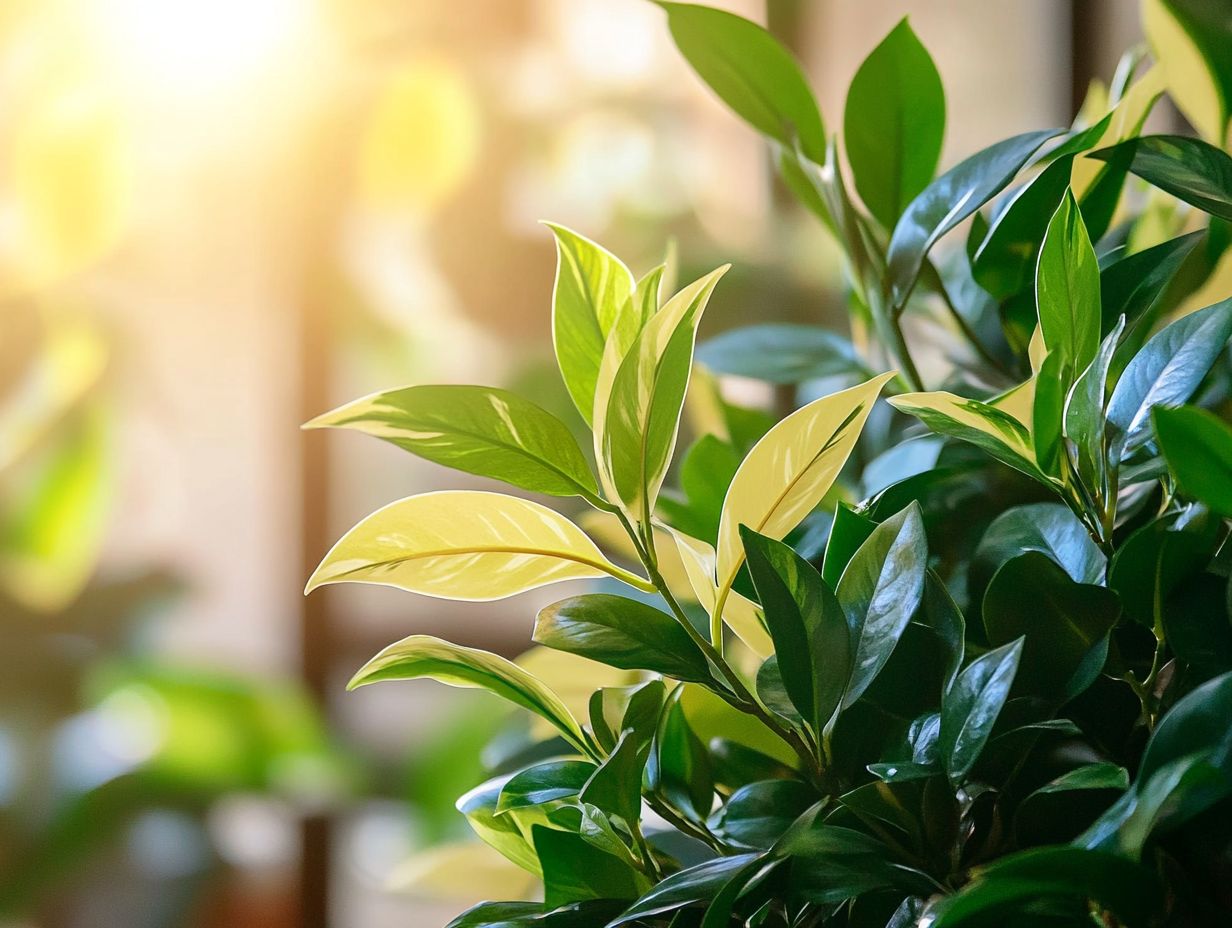
The light spectrum comprises a variety of wavelengths, each playing an important role in photosynthesis and the overall health of diverse plant species. Understanding this spectrum is essential for you, whether you’re a gardener, horticulturist, or someone keen on optimizing plant growth.
For example, blue light, found in the shorter wavelength range, helps plants grow by encouraging lush foliage and sturdy stems. On the other hand, red light, with its longer wavelengths, is crucial during the reproductive stages of plants, as it significantly aids flowering and fruiting.
Interestingly, some species thrive under different light conditions, showcasing remarkable adaptability that allows them to harness specific wavelengths effectively. By recognizing these differences, you can tailor your lighting strategies to boost photosynthetic efficiency and cultivate vibrant, healthy plants.
Factors Affecting Light Absorption by Plants
Several factors influence light absorption in plants, such as the distance from the light source, the intensity of the light, and the duration of exposure. Each of these elements plays a crucial role in determining the overall health of your plants.
Distance, Intensity, and Duration
The distance from the light source is important in how plants absorb light. It influences the intensity and duration of exposure, leading to variations in growth rates across different plant types.
Your proximity to light sources affects the amount of energy available for photosynthesis, which is essential for converting light into chemical energy. Positioning your plants closer to a light source increases their exposure intensity, allowing for more efficient light absorption.
Plants that are further away may struggle to capture enough light, leading to inadequate energy production and stunted growth. The duration of exposure is equally significant; extended time under optimal light conditions can greatly enhance photosynthetic activity and nutrient uptake.
By examining these variables, you uncover their vital roles in determining overall plant health and productivity.
Signs of Insufficient Light for Plants
Spotting when your plants lack light is crucial to keeping them healthy! Symptoms like stunted growth, yellowing leaves, and leggy stems serve as clear indicators that your plants aren t getting enough light.
By paying attention to these cues, you can take the necessary steps to enhance their environment and ensure they thrive.
Identifying and Addressing Light Deficiency
Identifying and addressing light deficiency in your indoor gardening journey involves recognizing key signs, such as slow growth or pale foliage, and taking thoughtful actions to enhance light exposure.
Your plants rely on adequate lighting for photosynthesis, which directly influences their vitality and overall health. You can implement straightforward strategies to diagnose light shortages, such as evaluating the placement and intensity of your grow lights or observing how natural sunlight streams into your space. Additionally, consider using smart lights for plant care to optimize their lighting needs.
Using tools like light meters, which help you measure how much light your plants are getting, can provide precise measurements. By considering the types of plants you’re cultivating and their growth stages, you can devise effective solutions like rotating plants for even light distribution or investing in artificial lighting options that mimic natural sunlight. Additionally, understanding the light spectrum for plants can enhance your overall plant care strategy.
Best Practices for Providing Adequate Light
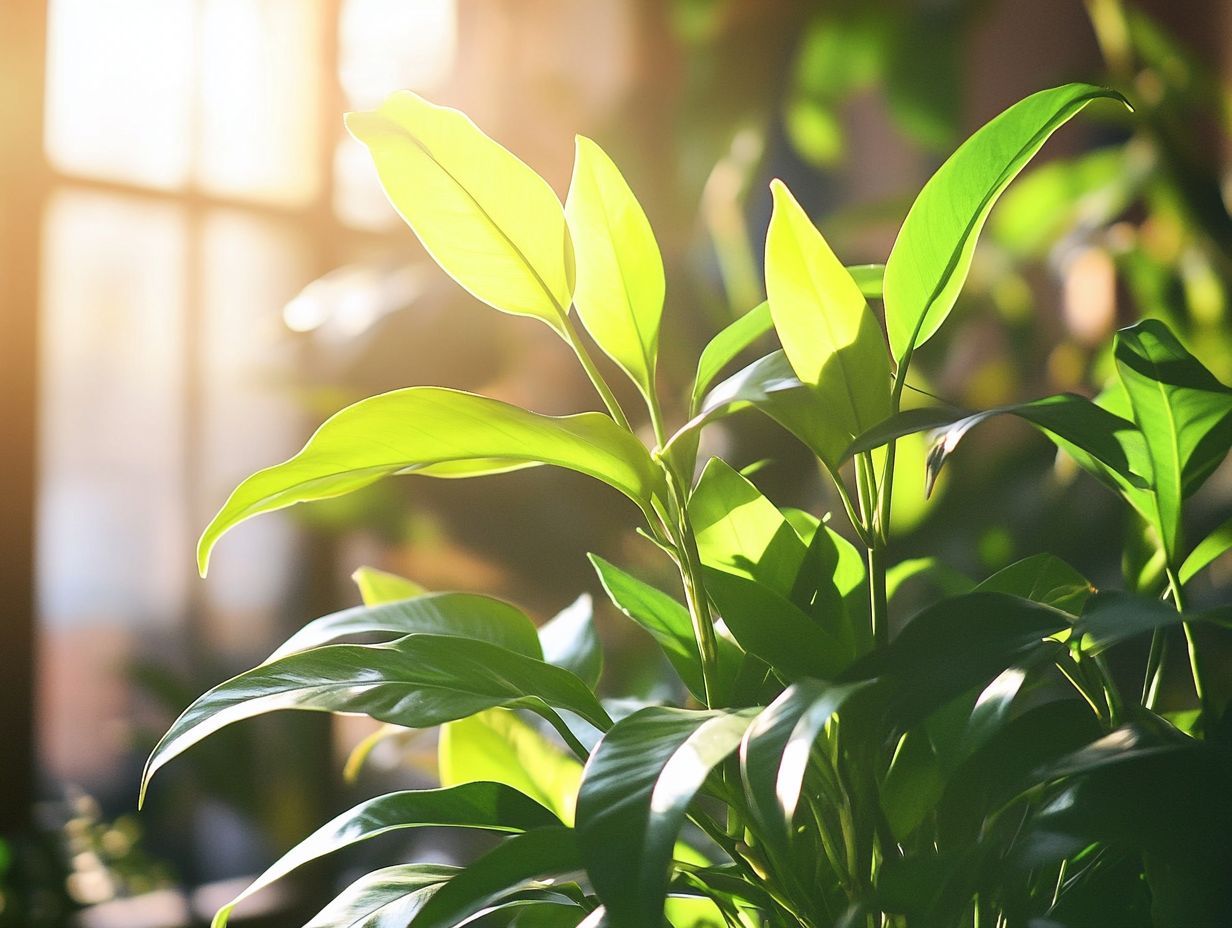
Implementing best practices for providing adequate light is essential for the health and growth of various plant types, whether you opt for natural sunlight or employ artificial lighting techniques.
Your plants thrive when they receive the right amount of light, so it’s important to choose the method that best suits their specific needs. Act now to ensure your plants get the light they need!
Lighting Techniques for Different Types of Plants
Different types of plants require unique lighting techniques. Tropical plants thrive under specific conditions, while cacti and succulents relish more intense light exposure.
Understanding these distinctions is key to keeping your plants happy and healthy! Tropical plants prefer indirect light, often benefiting from fluorescent bulbs that mimic natural sunlight. These bulbs deliver the warmth they crave. In contrast, cacti and succulents flourish under full-spectrum LED grow lights, which perfectly align with their need for high light intensity.
By fine-tuning light duration and intensity according to each plant’s specific needs, indoor gardeners can foster healthy growth and vibrant foliage. This achieves the delicate balance that ensures plants truly thrive.
Common Mistakes to Avoid
Avoiding common mistakes in lighting practices is key to maintaining optimal plant health. Improper light intensity or duration can significantly hinder growth.
Inadequate lighting can lead to weak stems, pale leaves, and stunted growth all issues that are easily rectified with a few thoughtful adjustments. Understanding the specific light requirements of various plant species can dramatically enhance their vitality. For instance, while succulents thrive under direct light, ferns prefer a more shaded, low-light environment.
Using timers helps you control how long plants get light, ensuring they receive consistent and appropriate light durations. Regularly rotating your plants prevents uneven growth and encourages a fuller structure. By implementing these strategies, you’ll see a noticeable improvement in your plants’ health and overall appearance.
Frequently Asked Questions
What is the science behind light and plant care?
The science behind light and plant care involves understanding how light affects photosynthesis, the process plants use to make food from light, and how different types of light can impact plant growth and development.
Why is light important for plants?
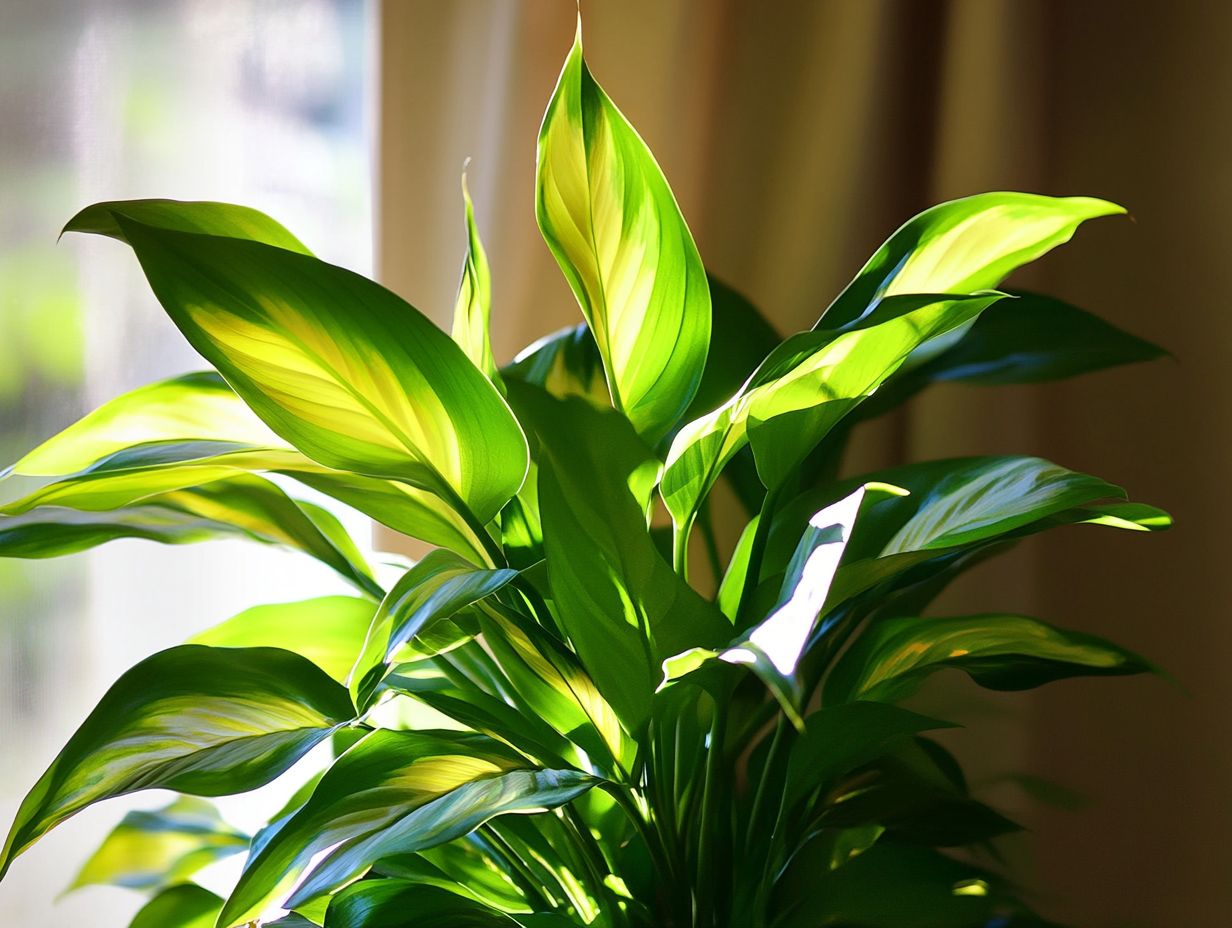
Plants use light energy to produce food through photosynthesis, which is essential for their growth and survival. Light also influences various physiological processes in plants, such as flowering and fruiting.
What types of light do plants need?
Plants require a combination of red and blue light for optimal growth and development. Red light is crucial for photosynthesis, while blue light helps with plant growth and leaf development.
How does the amount of light affect plant growth?
The amount of light a plant receives directly affects its growth. Insufficient light can lead to stunted growth or leggy plants, while too much light can burn the leaves and inhibit growth.
Can artificial light be used for plant care?
Yes, artificial light can supplement natural light for plant care. However, it is essential to choose the right type of artificial light, such as LED or fluorescent, and to provide the appropriate light spectrum for the specific needs of the plant.
How can I determine if my plants are getting enough light?
You can tell if your plants are receiving enough light by observing their growth and foliage. If they are growing tall and spindly or have pale, yellow leaves, it may indicate a lack of light. Conversely, if the leaves are wilting or turning brown, it may be a sign of too much light.

